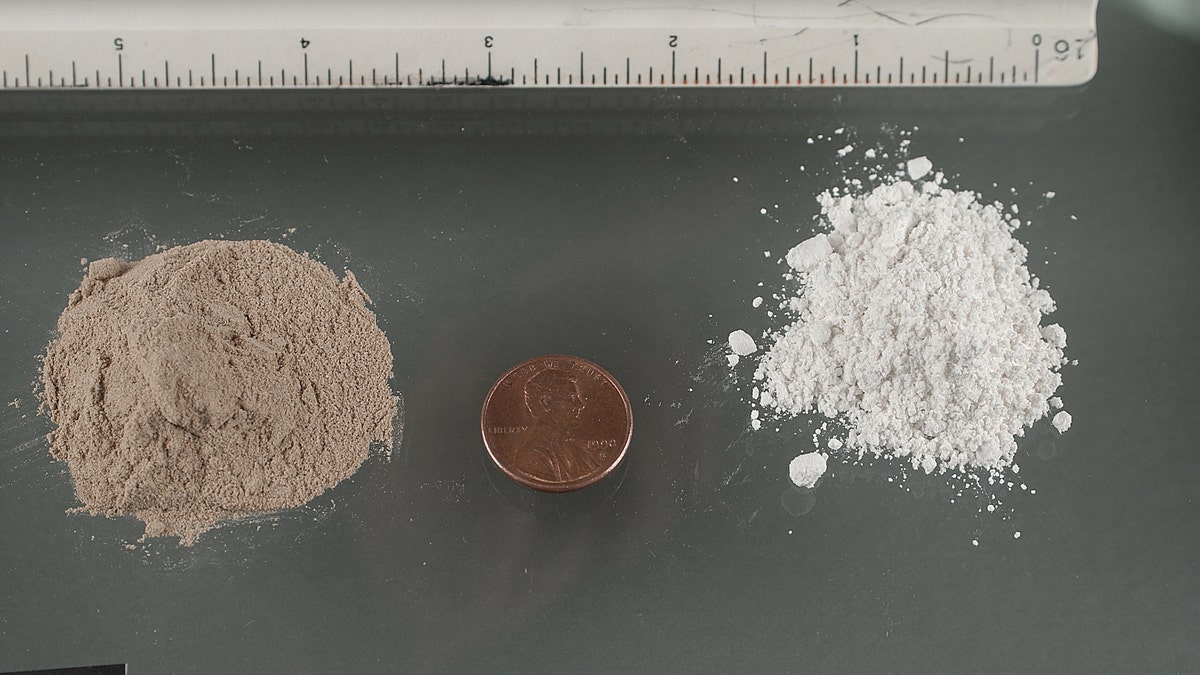
Heroin (r) south east asian (L) south west asian (US Drug Enforcement Administration)
A change in the formula of the highly abused painkiller OxyContin has led to an unexpected – and dangerous – shift to heroin among drug abusers, according to new research.
In the past, OxyContin was designed to be released into the body’s system slowly, over the course of many hours, meaning each pill contained a large reservoir of oxycodone. Drug users soon discovered by crushing the pills and inhaling them, or dissolving the pills in water and injecting them, they could bypass the slow-release mechanism and get an immediate ‘high.’
“This essentially initiated a huge epidemic of prescription drug abuse of opioids, in particular, that we’ve seen over past few years,” said principal investigator Dr. Theodore Cicero, who is a professor of psychiatry at Washington University School of Medicine in St. Louis, Mo.
But in 2010, Purdue Pharma, which manufactures OxyContin, changed the formula of the opioid drug to make it more difficult to crush and much slower to dissolve, which appears to have made the drug less attractive to users, according Cicero and his colleagues.
The researchers surveyed more than 2,500 patients from 150 treatment centers across the U.S. and found that while the new formula has successfully stopped many users from abusing OxyContin, they aren’t abandoning drugs entirely. A significant percentage of former OxyContin users are instead turning to harder drugs, such as heroin and other, stronger opioids.
According to the survey results, the number of people who report OxyContin as their primary drug of abuse has dropped from 35.6 percent of respondents before the new formula was released, to 12.8 percent after.
In addition, the percentage of people who reported using OxyContin to get high “in the past 30 days at least once” fell from 47.4 percent to 30 percent. During the same time period, the percentage of people who reported using heroin nearly doubled.
“The use of OxyContin has dropped precipitously, but none of us anticipated that people who were addicted to oxycodone would leave it and select another drug to take its place,” Cicero said. “The thing about drug abuse is it’s like a big balloon – when you poke it in one place, it pushes out somewhere else.”
While there is reason to celebrate the new formula, which is the first abuse-deterrent formula proven to be successful, Cicero said the corresponding increases in heroin and other opioid abuse are worrisome and need to be addressed.
“People are going from an essentially safe medication with known, specified doses to a powder that their dealer is telling them is heroin,” Cicero said. “There’s no way to know if that’s true, and the purity is uncertain [because heroin can be cut with other substances]. People who are switching suddenly aren’t sure what they’re getting, and overdose is likely to occur. I think it will happen more often with heroin now.”
‘Heroin logical next choice’
According to Cicero, people are likely making the jump from OxyContin to the harder street drug because in certain ways, heroin is a similar equivalent.
“Heroin is also snorted and used intravenously -- and easily available and cheap -- so it’s a logical choice,” Cicero said.
Because the study is preliminary, there is no exact percentages yet on how many people make the switch from OxyContin to heroin or other drugs, nor specific data showing which demographic is most likely to do so. Nevertheless, Cicero said the research should spur more governmental programs and research aimed at preventing drug abuse in general.
“This needs to be in public discussion because we need to come to grips that we’re dealing with a much larger problem than we have in the past,” Cicero said. “On a national policy level, the government should be funding more treatment programs, but more importantly focusing on research to find [improved] intervention/prevention techniques.”
The study was published Wednesday in the New England Journal of Medicine.
